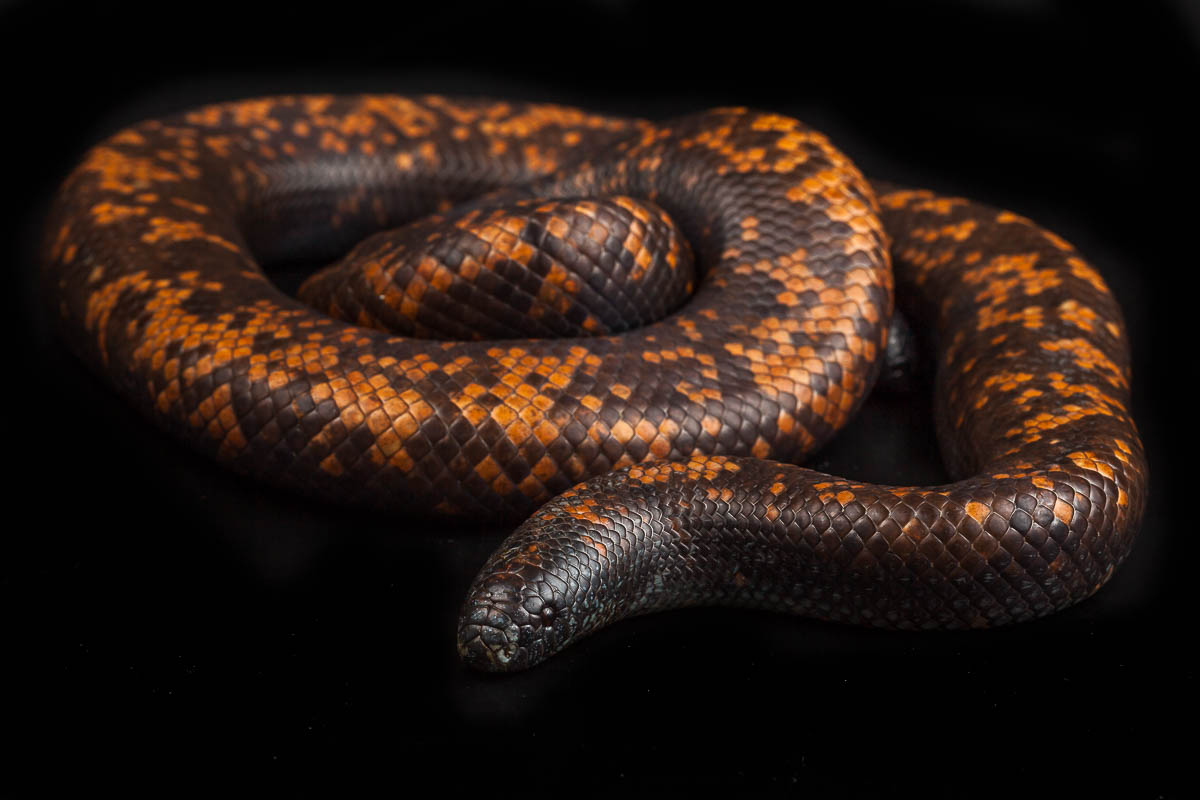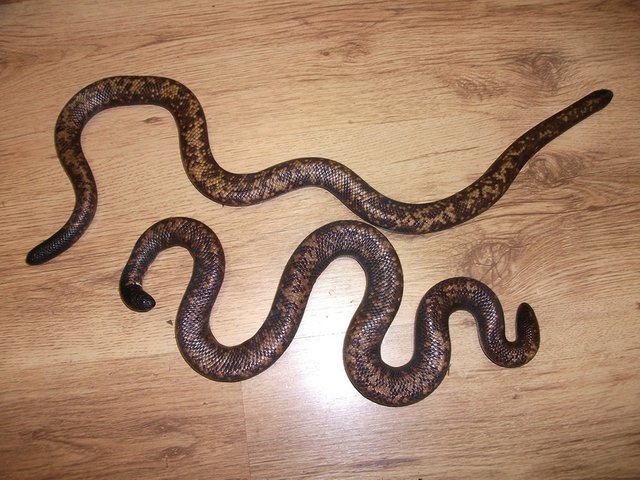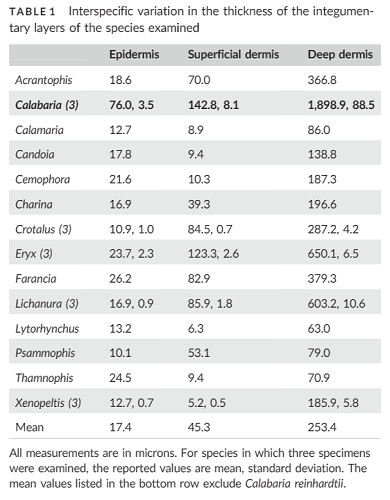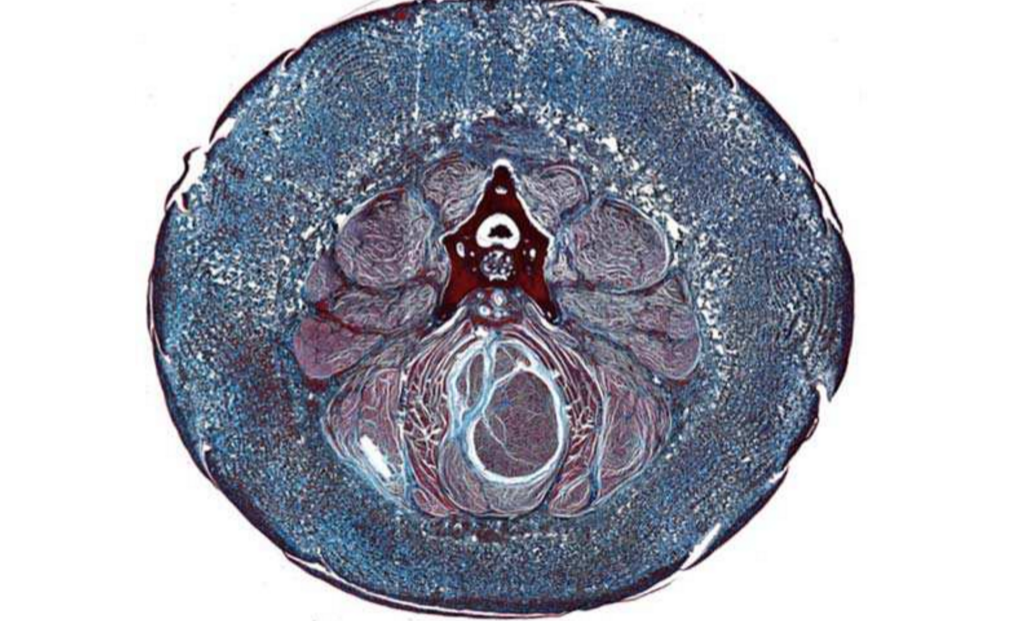Calabaria Reinhardtii: The Unsightly Snake with Rhinoceros Skin
It's not a secret that a rhinoceros has a very durable skin, which provides effective protection. The skin of the adult animal is able to withstand the impact of a bullet from a hunting rifle of medium caliber. But few know, that evolution has given the same protection mechanism other small inhabitants of the African continent.

image source
Calabar python (Calabaria reinhardtii) looks very mediocre. The adult snake reaches a length of not more than 1 meter, and prefers a digging lifestyle. The narrow (relative to the thickness of the body) head, allows to efficiently dig the soil. Plain brown colouring with spots makes it easy to camouflage in the dry grass.

In its appearance, this snake is more like a huge earthworm. image source
But, if look closely (as did scientists from Kirksville College of Osteopathic Medicine), we can see that the Calabar's skin looks different than the skin of other snakes.

image source
Calabaria reinhardtii does not have a Bouligand-type arrangementof collagen bundles in the deep dermis, instead the fibers show analternating arrangement of perpendicularly offset layers (Figure 3).Given the increased strength associated with the Bouligand-typearrangement, its absence from the dermis of C. reinhardtii may reflect aform of functional trade-off. In a true Bouligand-type system many ofthe collagen bundles would be directly aligned with, or just slightly off-set from, the long (cranial-caudal) axis of the snake’s body. It is alongthis axis that snakes exhibit the greatest range of movement both dur-ing coiling and locomotion. While a Bouligand-type arrangement couldreduce locomotive flexibility, the 458 orientation of the collagen bun-dles found in C. reinhardtii enhance penetration resistance while onlyreducing circumferential expansion of the snake’sbody.
Her scales shorter and under them there is layer of ordered collagen filaments. The protein filaments of each underlying layer are perpendicular to the fibrils of the upper layer (the collagen in the skin of the rhinoceros has the same structure).

Such structure makes the Calabar's skin 15 times stronger than all the other snakes. At the same time, the small size of the scales and their specific location do not reduce the flexibility of the snake. The python is able to curl up in a tight ball, hiding his head and tail inside.
Strangely enough, but thick skin this snake acquired first of all for the sake of hunting for mice. Calabar feeds only on young mice, attacked them in the presence of their parents. So the snake skin must withstand the bites of sharp incisors of adult rodents.

A cross-section of the Calabar's tail. Showing the prominence of the deep dermal collagen bundles, and the close integration of the dermis with the underlying muscle and skeletal tissue. source
The additional protective mechanism - the similarity of the structure of the head and tail. Hunting the cubs, the serpent deceiving their parents, substituting the tail instead of more vulnerable head.

image source
The scientists would not carry out such a detailed study of the snake just for the sake of fact studies. The repetition of the Calabar's skin structure will allow create durable and comfortable medical clothing, which will not hamper movement (for example: surgical gloves). It is quite possible that such technology may further be used to create protection for soldiers.
Sources: The rhinoceros among Serpents : Comparative anatomy and experimental biophysics of Calabar burrowing python skin, WiKi, Naked science. Images from Google Search.
